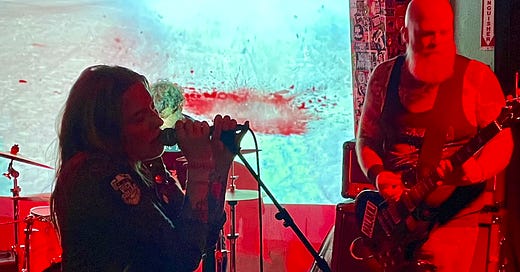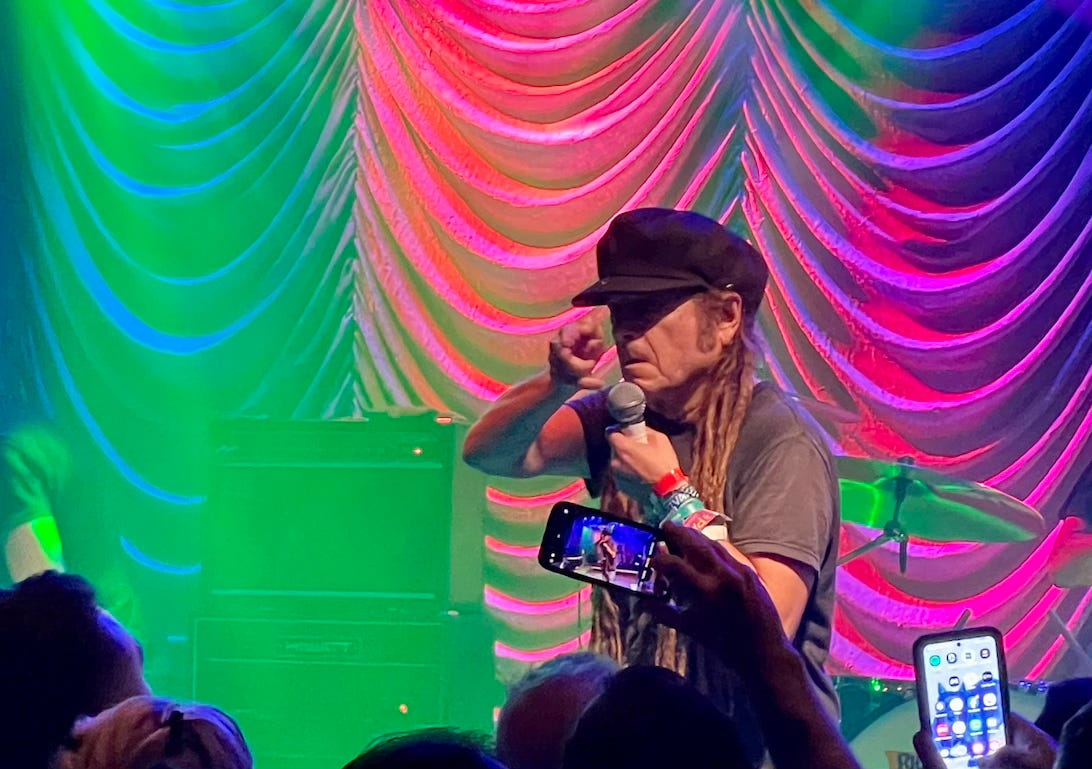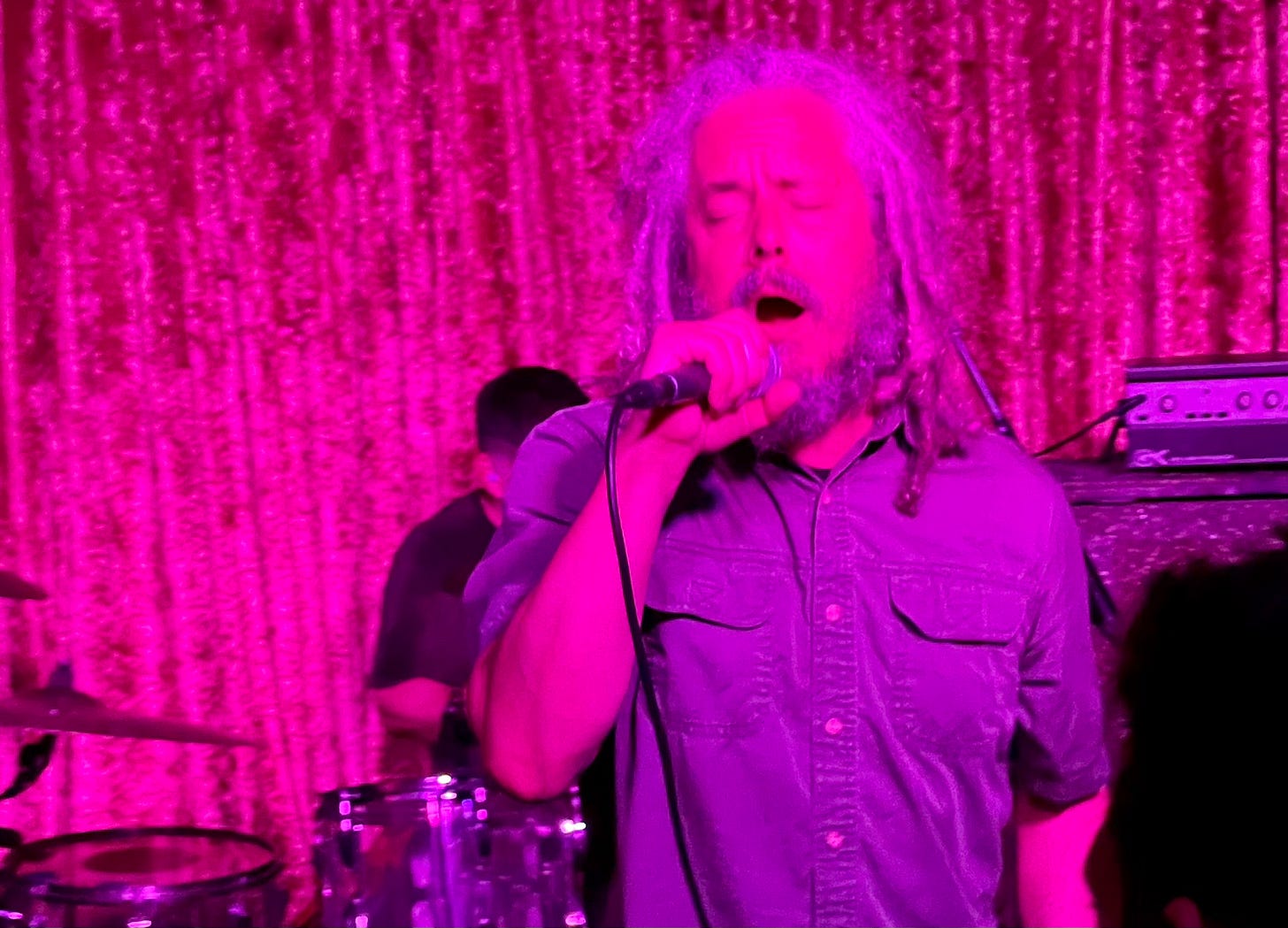Greetings from Capitola!
I’m in the middle of a road trip to visit my daughter Annie at UC Davis. I started off with a few days in LA and then drove up the coast to Capitola, which is just south of Santa Cruz for a mini writing retreat. At least that was the plan. Capitola was so charming that I walked the beaches and along the cliffs and amongst the redwoods—all over really—snapping photos.
I want to talk for a moment about another walk I took last weekend on the 110 freeway in LA. This section of the 110, the Arroyo Seco Parkway, was built in 1935 to connect Pasadena to downtown LA, creating the first commute. The idea that you could live in one place, work in another, and drive back and forth every day was a new concept that depended on the popularization of the automobile. This is why the exits and onramps for this section of the 110 are so murderously short—they were built for much slower cars.
Last Sunday about seven miles of the 110 was shut down for four hours for Arroyo Fest so that pedestrians, runners, skaters, and cyclists could make use of the freeway. People on foot used the southbound side and people on wheels used the northbound side. I happened to be in town so I spent part of Sunday morning walking on the freeway with tens of thousands of other Angelenos and it was a total blast.
Every time I go to Razorcake headquarters in Highland Park, I drive this stretch of freeway, exiting at Avenue 64/Marmion Way. It’s a drive I’ve done dozens, if not hundreds, of times. So it was a trip to travel the same stretch of road on foot.
At first it was relatively quiet when I leisurely walked onto an on-ramp so short that I usually have to enter with the pedal to the metal. It was cool and clear. A perfect fall morning. As I traveled farther south I saw more and more people: groups of joggers, young couples, old couples, families with their kids—many in Halloween costumes.
After I strolled about a mile or so I turned around and headed back and it was then that I could appreciate how many more people were on the road. I stopped and took a short video of the cyclists moving past me: I counted fifty in 20 seconds with an equal number headed the other direction. (You can watch the video and see other photos on Instagram.)
I’ve been to other places where they close streets to cars—like Mexico City, one of the most congested cities in the world. I often wondered, “If they can do it there, why can’t we do it here?” I think Arroyo Fest is a necessary step. If we’re going to reverse climate change and our dependence on fossil fuels, we need to reimagine our cities, we need to uncouple ourselves from our cars, we need to create a future built around people, not machines. Arroyo Fest was one small step in that direction.
It was a strangely emotional feeling walking along the freeway. I think the only time we imagine ourselves as a pedestrian on the freeway is when things go horribly wrong, like survivors in a post-apocalyptic world. But what if we can avoid those worst-case scenarios? What if we can imagine a better future? Isn’t it hopeful to imagine that this is the first step?
Since last week’s Message from the Underworld I somehow managed to attend three more punk rock shows: one in San Diego and two in LA. Last week, I observed how shows start so early these days. One way to avoid an early show is to go to a good old-fashioned dive bar and The Tower Bar is the best of the worst. (Or is that the worst of the best?)
The Tower Bar shouldn’t exist. It’s a tiny, low-ceiling dump in an octagonally shaped building with an actual hundred-foot tower on its roof modeled after the Empire State Building. Cars keep smashing into the bar and crashing through its walls. It happened in 1964. It happened again in 2017 while my friend Davey Tiltwheel was drumming and a police cruiser rammed the place. (Davey was injured but is okay. In fact, his band Tiltwheel played at the Tower Bar last weekend.) Anyway, I assure you The Tower Bar is real though the place is thick with spirits like you wouldn’t believe.
Earlier this year I was interviewed by a gentleman named Kuba for a Polish punk zine. After I submitted my answers to his questions so that they could be translated into Polish, he informed me that he was giving me a gift and it would be delivered by the Swedish hardcore band called Šmierč. So when I learned that Šmierč was coming to The Tower Bar last Wednesday, I showed up to collect.
I wasn’t prepared for Šmierč. Šmierč means death in Polish. In fact, most of the band’s songs are in Polish even though the band is Swedish. The members of Šmierč are veteran players, seasoned road dogs all in their forties, but this was the band’s first time in the United States, and they came to play.
I love songs with lots of layers. Songs that start slow or subdued and then build into something bigger, more momentous, something epic. It’s one of the things that metal does really well, and I like it when bands with the urgency of punk and hardcore stretch out their songs to create a sense of drama, a little theater, the idea that the song is bigger than the players on the stage, that they are merely the vessels through which it is expressed. The song doesn’t start with them or end with us so hold the fuck on—this is going to be intense.
Šmierč excels at that, which I suppose is to be expected from a band of actual Vikings.
I witnessed something I’ll never forget at that show, a brief moment of connection between Šmierč and the previous band, Rival Squad, a hardcore band with Latinx members and a singer with incredible power that sings some of their songs in Spanish. Šmierč, whose singer is also female, announced to the crowd that the chorus for the final song is in English: This is how we ride.
As the song was winding down, she passed the mic to Rival Squad’s vocalist, who was standing front and center, belting out the chorus, and she carried the song home. A spontaneous connection between two women from different cultures, different countries, different tribes, singing in multiple languages to get at something ineffable, something that words can only approximate, the sorcery of live performance, an unrehearsed moment that will never be repeated.
Walking back to my car, I wondered if this connection could have been made if the performers were men, particularly white men, locked into the poetry of their grievances. The chorus was the key: This is how we ride. Plurality is essential if we’re going to change the world.
A few days later I went to Hermosa Beach to see OFF! at Saint Rocke, a venue on PCH not far from King Harbor in Redondo Beach. When I lived in the South Bay a lifetime ago it was called The Pitcher House and was a sports bar with sawdust and peanut shells on the floor. I think I wandered in once or twice from the Hermosa Saloon across the street, and wandered right out again.
My feeling was that Saint Rocke is too small for what it is, what it’s trying to be, but I haven’t lived in the South Bay since 2006 and by then I was living all the way up in Playa del Rey, which had plenty of shitty bars from which to choose. A extreme rock band called CUNTS were the openers. They wore stockings on their heads, transforming them into something monstrous, a kind of constraint that pushed the players to go for it every second they were on stage, which they did.
If you’re making a movie where someone who is about to be murdered wanders through a crowded show while extreme music plays in the background, CUNTS is waiting for your call.
At the risk of sounding repetitive, OFF! was incredible. Keith was on fire. Clearly, being back in Hermosa stirred something up in him. It wasn’t just another show for him. His old bandmate and longtime Hermosa Beach resident Earl Liberty was at the show and at the end he and Keith sang the fight song for Pier Avenue Middle School.
On Saturday I went to see Soulside and Scream perform at Genghis Cohen in Hollywood. They’d played the night before at Zebulon and I suspect this show was added much later because it wasn’t sold out even though the room was tiny. The room would have been small for a poetry reading.
Soulside was everything I could have hoped for. Regular readers know my feelings about Soulside, especially Hot Bodi-Gram, and they played five songs off the record.
I wasn’t as excited to see Scream but when they launched into “Came Without Warning” all the old feelings came back from when I was beginning to understand there was something magical about those DC bands. I found myself next to Soulside’s bassist Johnny Temple and told him how great the show had been. Then, afterward, as I made my way down Fairfax to my car parked a few blocks away, I saw Soulside’s singer, Bobby Sullivan, and told him I’d been waiting to see Soulside for 30 years and now that I had, I could die.
But not today.
Or, hopefully, anytime soon, because I’m going to see the Circle Jerks and Descendents this week. Be safe, be well, look at the trees, look at the trees.
If you’re new-ish here and you liked this newsletter you might also like my new novel Make It Stop, or the paperback edition of Corporate Rock Sucks: The Rise & Fall of SST Records, or my book with Bad Religion, or my book with Keith Morris. Message from the Underworld comes out every Wednesday and is always available for free, but paid subscribers also get Orca Alert! every Sunday. It’s a weekly round-up of links about art, culture, and science you may have missed while trying to avoid the shitty news about [gestures at everything].






Arroyo fest sounds fun! I’ve been to Mexico City for the paseo de la reforma, lot of people it’s amazing! back in April this year I did my first event along with the Red Cross from Tecate, Baja California, to do something similar , it came up pretty good to be my first time doing something like this, it isn’t easy because all the permits, sponsors etc but it turned out to be a great experience.
Love the South Bay love!